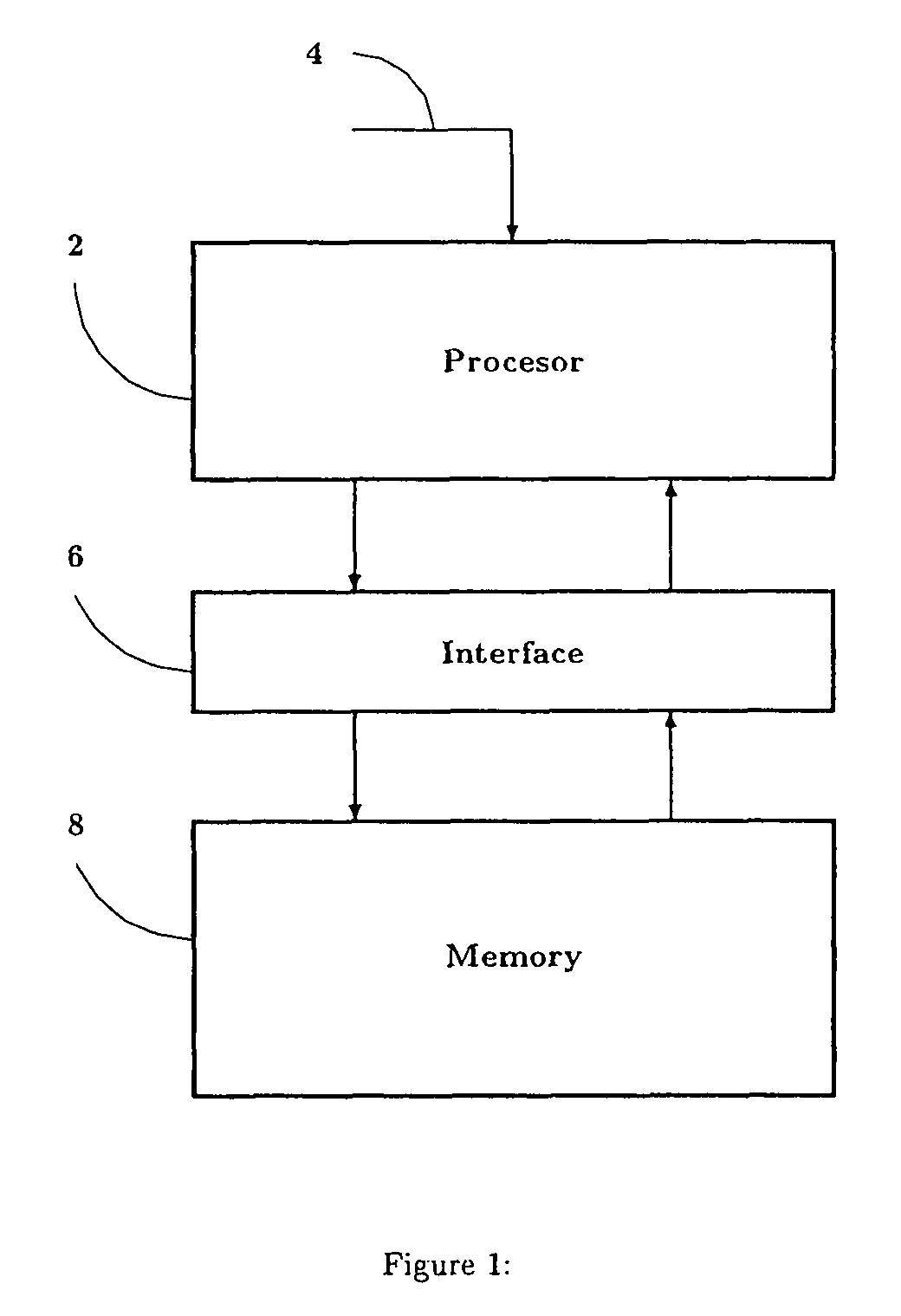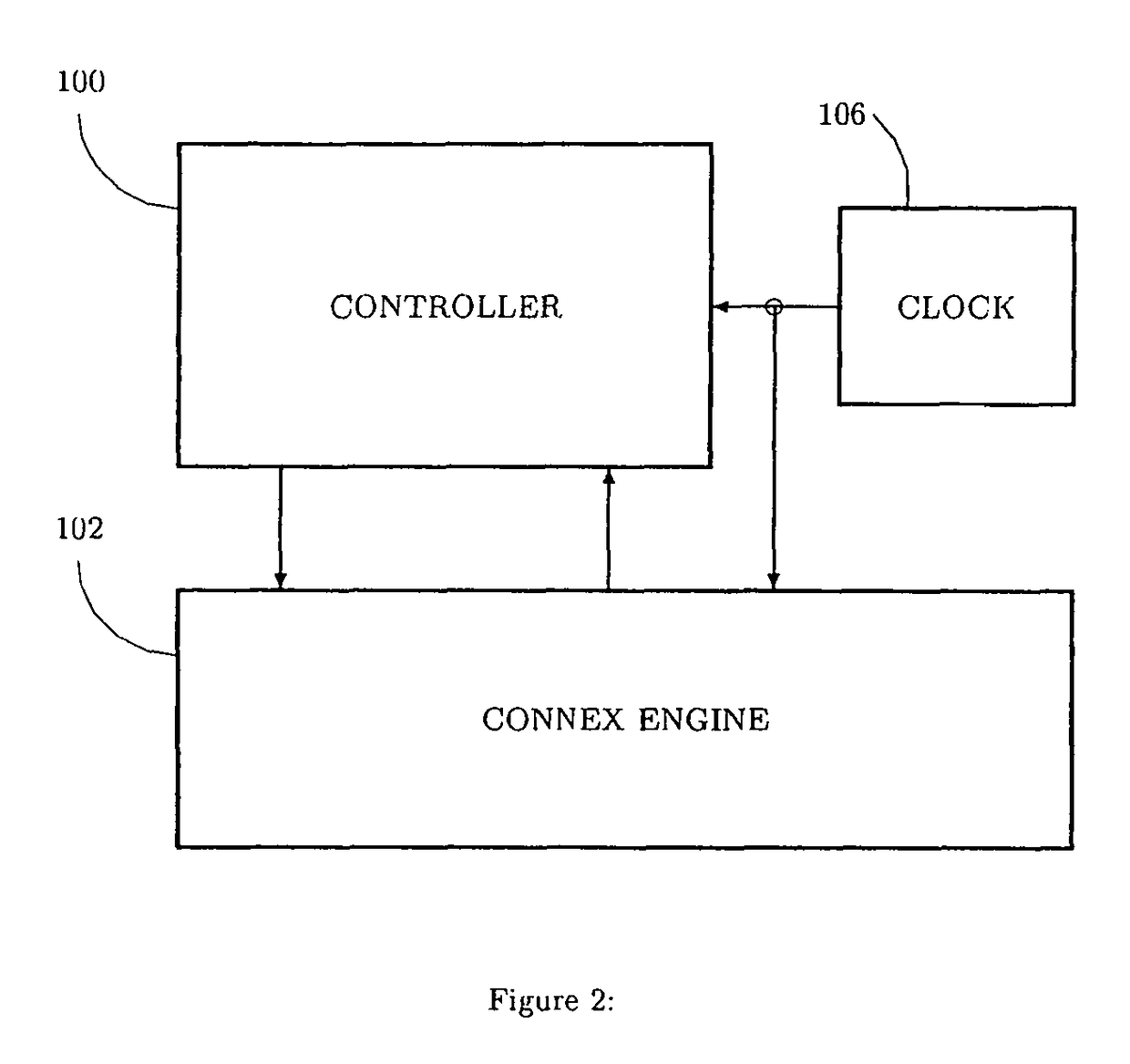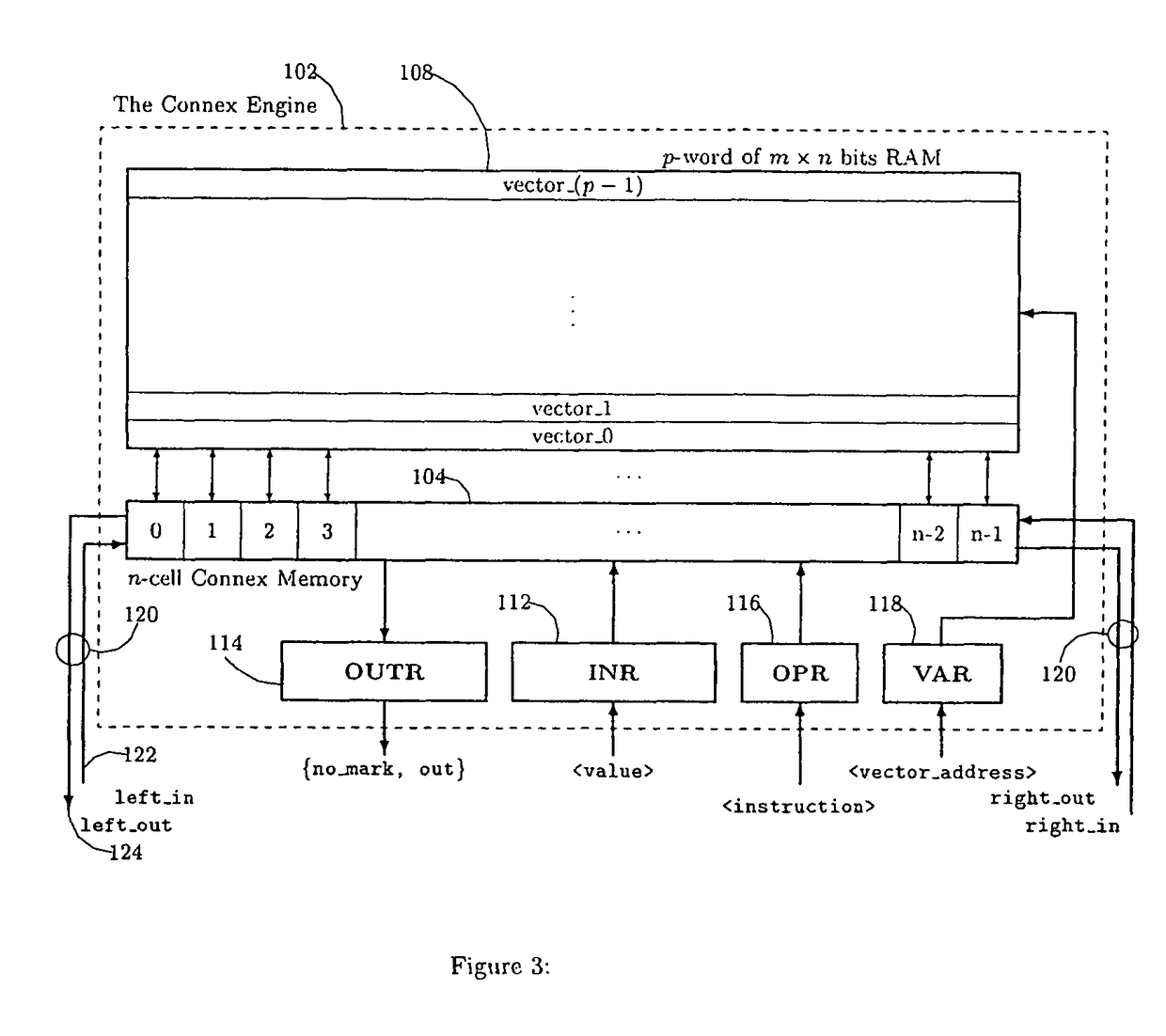Cellular engine for a data processing system
a data processing system and cell engine technology, applied in the field of cell engine, can solve the problems of limiting the speed and efficiency at which various operations may be completed, unable to process information themselves, and limited the effectiveness of mimd devices
- Summary
- Abstract
- Description
- Claims
- Application Information
AI Technical Summary
Benefits of technology
Problems solved by technology
Method used
Image
Examples
Embodiment Construction
[0030]FIG. 2 depicts the architectural relationship between a controller 100, hereinafter referred to as the Cartesian Controller (CC), and a cellular engine 102, hereinafter referred to as the Connex Engine (CE). A synchronizing clock circuit 106 is utilized to coordinate the operation of the CC 100 and the CE 102 such that one of a plurality of instructions may be issued by the CC 100 and transferred to the CE 102 for parallel execution and processing.
[0031]The clock circuit 106 is capable of outputting a predetermined number of clock cycles per second, and the CC 100 is capable of performing an internal operation such that the CC 100 may perform one of a plurality of internal operations while also issuing in parallel one of a plurality of instructions to the CE 102 within a single clock cycle.
[0032]As depicted in FIG. 3, the CE 102 is made up of an array of active cells, or processing elements, embodied as the Connex Memory (CM) 104 and a RAM (random access memory) containing a p...
PUM
 Login to View More
Login to View More Abstract
Description
Claims
Application Information
 Login to View More
Login to View More - R&D
- Intellectual Property
- Life Sciences
- Materials
- Tech Scout
- Unparalleled Data Quality
- Higher Quality Content
- 60% Fewer Hallucinations
Browse by: Latest US Patents, China's latest patents, Technical Efficacy Thesaurus, Application Domain, Technology Topic, Popular Technical Reports.
© 2025 PatSnap. All rights reserved.Legal|Privacy policy|Modern Slavery Act Transparency Statement|Sitemap|About US| Contact US: help@patsnap.com



